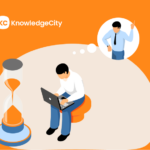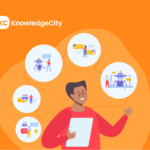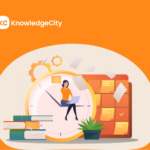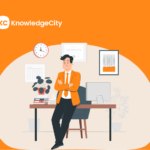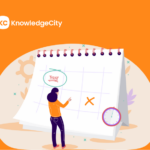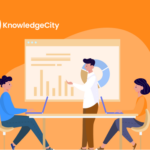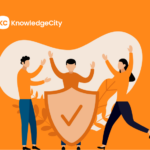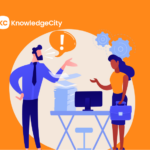Every choice in talent management shapes people’s careers, growth, and daily experiences at work. Yet as organizations grow and roles evolve, making these decisions accurately and fairly has become increasingly complex. To navigate this complexity, organizations are turning to AI, not to replace humans, but to assist them. AI can process data, reveal patterns, and highlight insights, while humans apply judgment, empathy, and context to ensure every decision is responsible, fair, and meaningful.
For example, a recruiter may rely on AI to shortlist candidates, but it’s their interviews and assessments that determine who joins the team. An L&D lead may receive AI-generated training suggestions, yet they design development paths that truly help employees grow and succeed.
In this blog, we explore the main human-AI collaboration models in talent management, show how they operate across different stages of the talent lifecycle, and highlight governance, metrics, and best practices that ensure decisions are fair, accountable, and effective.
Key Collaboration Models for Talent Management
As we discussed already, human-AI collaboration in talent management is not about replacing people. It’s about combining human judgment with intelligent systems that help analyze data, find patterns, and support fair and confident decisions. Below are the main models organizations are adopting today.
1. Augmented Intelligence (Co-Pilot Model)
In this model, intelligent systems such as language models, recommendation engines, and predictive analytics tools assist HR professionals in their daily work. For example, they can suggest better wording for job ads, highlight the most suitable candidate profiles, or recommend learning paths for specific roles. The human still reviews and decides every step, using the system’s insights as guidance. This approach makes routine decisions faster and more consistent while keeping people fully in control.
2. Human-In-The-Loop (HITL) Model
Here, systems generate recommendations that are always reviewed by people before a final decision is made. For instance, a scoring system might rank job applicants based on qualifications, but an HR specialist reviews those rankings to ensure fairness and context. This setup helps minimize bias and errors, giving the organization both accuracy and human oversight.
3. Human-On-The-Loop (Supervisory Model)
In this model, intelligent systems handle repetitive or structured tasks, such as scheduling interviews or flagging employees ready for internal movement. HR professionals monitor the results through dashboards or review reports to make sure everything runs as intended. The process saves time while allowing humans to step in whenever the data shows something unusual or sensitive.
4. Agentic or Autonomous Systems with Governance Layers
This approach uses systems that can perform a series of predefined actions on their own, such as preparing draft offers for junior positions or updating workforce distribution reports. However, these systems always operate under clear rules and record their actions for human review. It’s an advanced model that gives HR teams more efficiency but still includes strict checkpoints for accountability and compliance.
5. Hybrid Teams (Centaur Model)
This model blends human expertise and intelligent assistance throughout the talent process. HR professionals bring empathy, cultural understanding, and ethical reasoning, while systems contribute analytical strength and speed. Together, they handle complex areas such as leadership development, performance reviews, or succession planning. This shared approach improves both the depth and fairness of decisions.
6. Multi-Stage Fairness Pipelines
Fairness cannot rely on one system or one person. In this model, talent decisions move through several stages, each designed to maintain transparency. For example, screening, scoring, auditing, and final review are treated as separate steps, each with a balance of human and system checks. This layered approach helps organizations ensure equity, document accountability, and reduce the risk of bias.
Applying Human-AI Collaboration Across the Talent Lifecycle
Once you understand the collaboration models, the next step is to see how they fit within the full talent lifecycle, from attracting candidates to developing and retaining talent. Each stage benefits from a different balance between human expertise and intelligent assistance.
1. Attraction and Sourcing
At the start of the hiring journey, intelligent systems that use natural language processing and recommendation engines can help create inclusive, appealing job descriptions and identify suitable candidate profiles from large databases. Recruiters can then review and refine these suggestions to ensure the tone and content reflect company values and remain unbiased. This setup saves time while maintaining fairness and human connection.
2. Screening and Selection
During screening, scoring systems can analyze resumes and assessment results to flag potential matches. These results should move through a multi-stage fairness process that includes screening, bias checking, and human review. HR professionals play a crucial role by validating that recommendations reflect real potential rather than relying only on historical patterns.
3. Onboarding and Learning
Once new hires join, intelligent learning systems can recommend personalized training modules based on role requirements, goals, and skill gaps. L&D professionals review and refine these recommendations to build practical learning paths. Automated onboarding workflows, such as sending welcome information or scheduling introductions, can operate in the background while HR teams hold regular check-ins to maintain personal engagement.
4. Performance and Succession
Analytics systems can identify trends in performance data, such as improvement areas or early indicators of burnout risk. HR and business leaders review these insights together to make informed decisions about promotions, coaching, or succession planning. This collaboration improves accuracy and transparency while ensuring empathy and context remain central to every decision.
5. Workforce Planning
When planning for future talent needs, predictive systems can model workforce scenarios that highlight capacity requirements, evolving roles, and emerging skill gaps. HR leaders then interpret the results, aligning data insights with business goals and market realities. For routine processes, autonomous systems can draft recommendations that humans review and approve.
Each phase requires selecting the right collaboration model for the level of complexity and risk. The key is to let intelligent systems handle data-heavy tasks while people apply judgment, context, and experience to make the final call.
Governance, Fairness, and Change Considerations
Technology delivers real value only when it operates under clear governance and shared accountability. The following principles help ensure human-AI collaboration remains transparent, fair, and trusted.
1. Human Oversight
Clearly define which decisions require human approval and which can safely rely on automated assistance. For example, job offers for senior positions may always need HR review, while early screening can depend more on system-based scoring with scheduled audits. This balance preserves control and trust.
2. Explainability and Transparency
Every automated output, whether related to hiring, promotion, or learning, should include a clear explanation of how it was generated. When managers and employees understand the reasoning behind a recommendation, it reinforces confidence and encourages acceptance.
3. Bias Testing and Audits
Before implementing any automated process, run structured bias tests to ensure fairness. Continue to audit samples regularly once the process is active. Bias can develop over time as data evolves, so consistent monitoring is vital to maintain fairness and compliance.
4. Data Governance and Traceability
Keep a clear record of all data sources, model versions, and decision steps. If a candidate or employee questions a decision, your team should be able to trace and explain it with confidence. Strong data governance supports both accountability and regulatory compliance.
5. Change Management and Skill Development
As human-AI collaboration becomes part of everyday work, equip your HR and L&D teams with the skills to interpret system results and know when to intervene. Building these capabilities ensures smoother adoption and helps people work confidently with intelligent systems.
Metrics That Matter
| Metric | What It Measures | Why It Matters for Human–AI Collaboration |
| AI Alignment Rate | Percentage of AI-generated shortlists or recommendations that match human decisions. | Shows how well intelligent systems (like recommendation engines or scoring tools) align with human judgment. A high rate indicates reliable AI support. |
| Human Override Rate | Percentage of AI suggestions that HR professionals adjust or reject. | Helps identify where AI needs fine-tuning or more context awareness. High override rates signal improvement areas. |
| Bias and Fairness Index | Comparison of outcomes across gender, ethnicity, or other protected groups at each decision stage. | Ensures fairness in AI-driven screening, scoring, or recommendations, and confirms bias audits are working effectively. |
| Decision Turnaround Time | Average time saved per hire, learning recommendation, or HR transaction. | Measures operational efficiency gained from AI support while maintaining human oversight. |
| Process Transparency Score | Feedback from HR staff and candidates on how understandable AI-supported decisions were. | Tracks trust and acceptance, clear communication improves confidence in the process. |
| Quality of Hire or Role Fit | Success rate of hires or internal moves made with AI assistance. | Evaluates long-term impact of AI-human collaboration on workforce quality and retention. |
| Learning Path Accuracy | Percentage of AI-recommended training modules that HR or L&D teams approve without changes. | Indicates how well learning recommendation systems understand skill gaps and learning goals. |
| Audit Frequency and Findings | Number of audits performed and issues identified per quarter. | Reflects how actively you’re monitoring fairness, compliance, and model accuracy over time. |
| Employee and Candidate Sentiment | Ratings or qualitative feedback on fairness, clarity, and experience during AI-assisted processes. | Demonstrates how human-AI collaboration affects user experience and overall trust. |
| Incident Rollback Rate | Number of automated actions that required manual correction or reversal. | Identifies risk areas and helps maintain accountability and control in sensitive decisions. |
Risks and How to Mitigate Them
Every collaboration model comes with challenges. Knowing these risks early helps maintain fairness and trust.
Unlocking the Full Potential of Human-AI Collaboration
Human-AI collaboration transforms talent management when intelligent systems handle routine, data-driven tasks and humans apply judgment, context, and ethical oversight. From attracting and selecting candidates to learning, performance, and workforce planning, each stage benefits from a thoughtful balance of AI and human input. Organizations that adopt structured collaboration models, fairness safeguards, and continuous oversight achieve faster, fairer, and more confident decisions.
KnowledgeCity, the best employee training platform in the USA, supports organizations in building these capabilities across all teams, helping employees at every level work effectively with AI, reduce bias, and make smarter decisions that drive lasting growth.
Subscribe to Our Newsletter
Join 80,000+ Fellow HR Professionals. Get expert recruiting and training tips straight
to your inbox, and become a better HR manager.
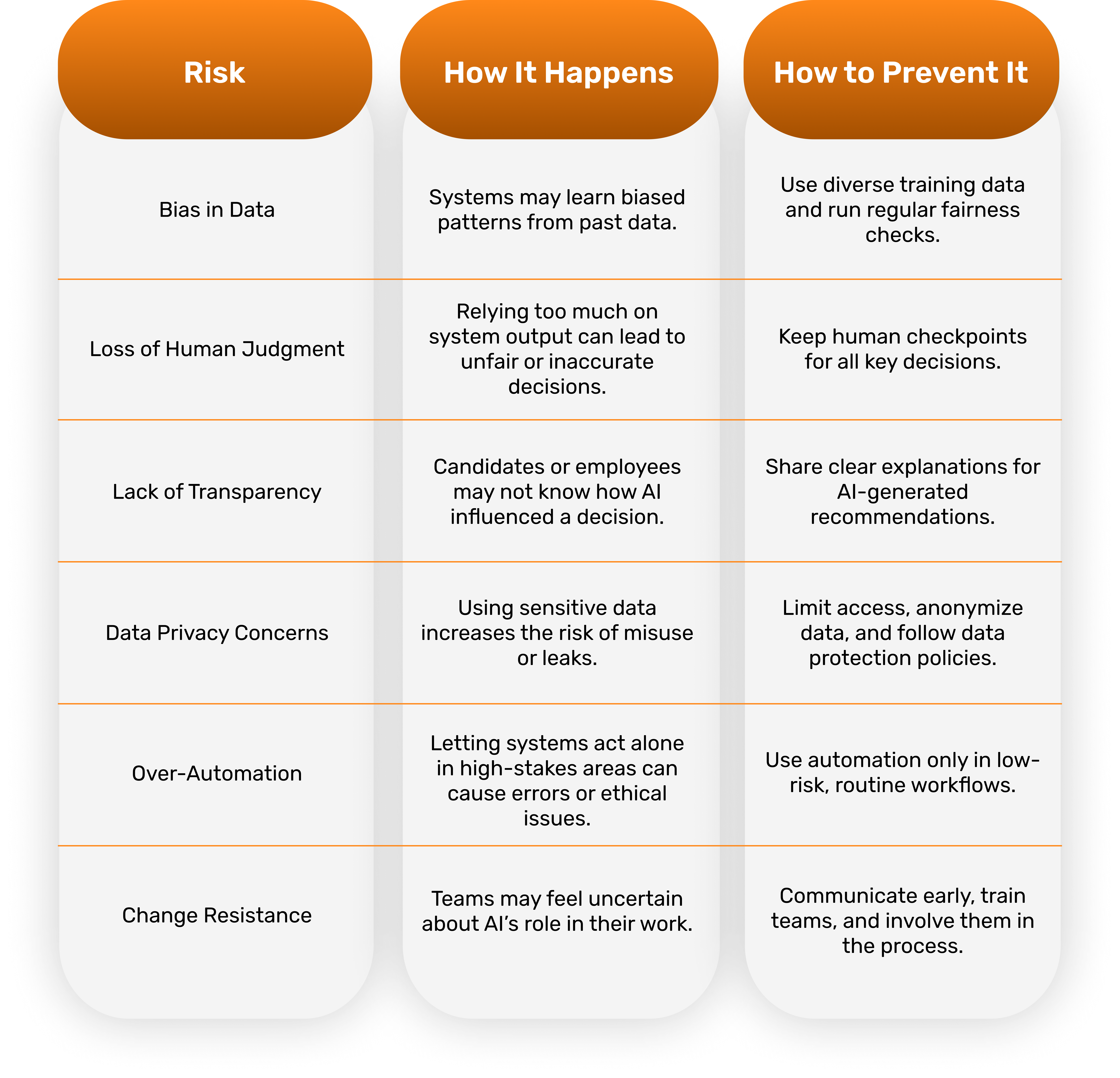

 KnowledgeCity
KnowledgeCity 